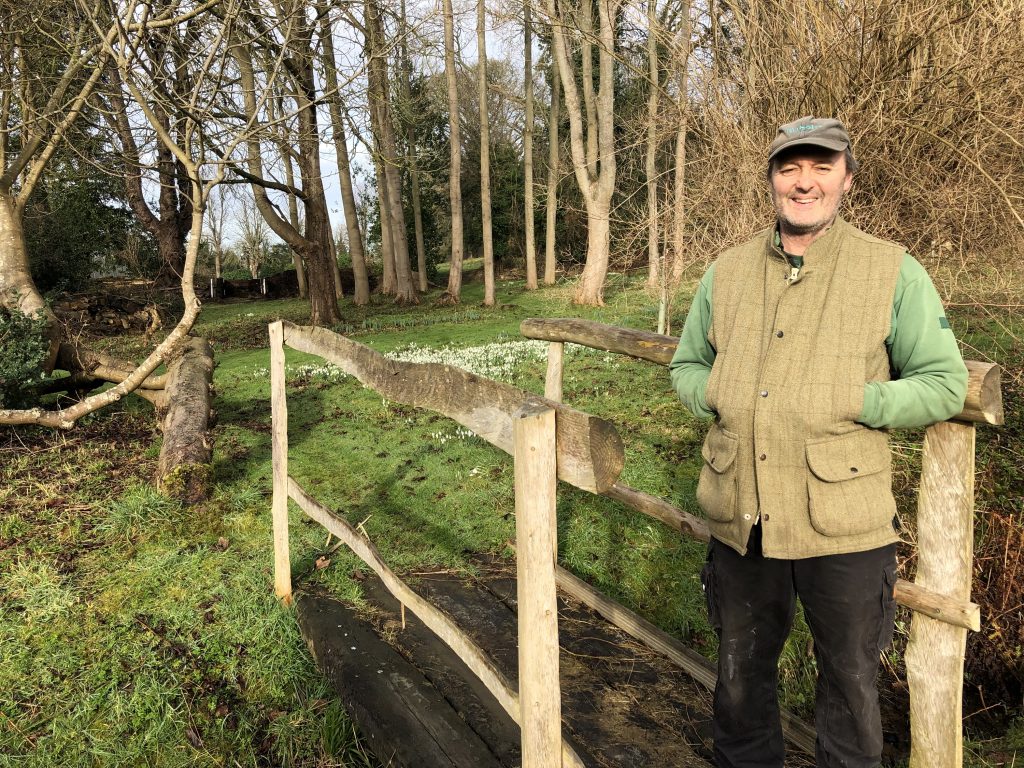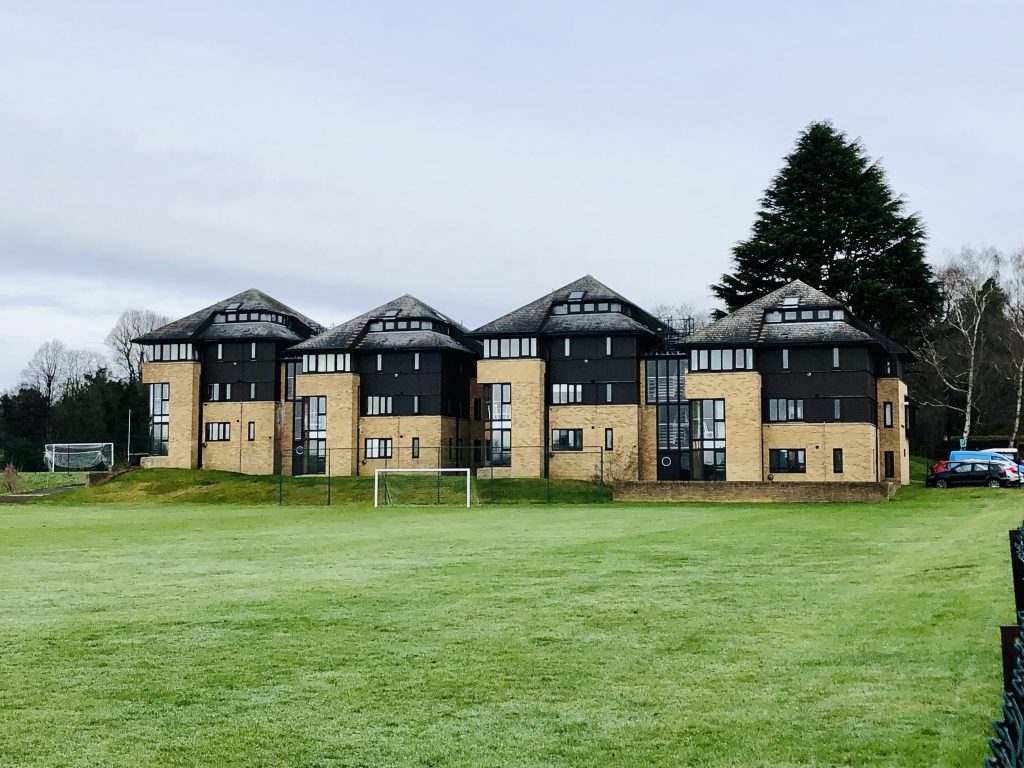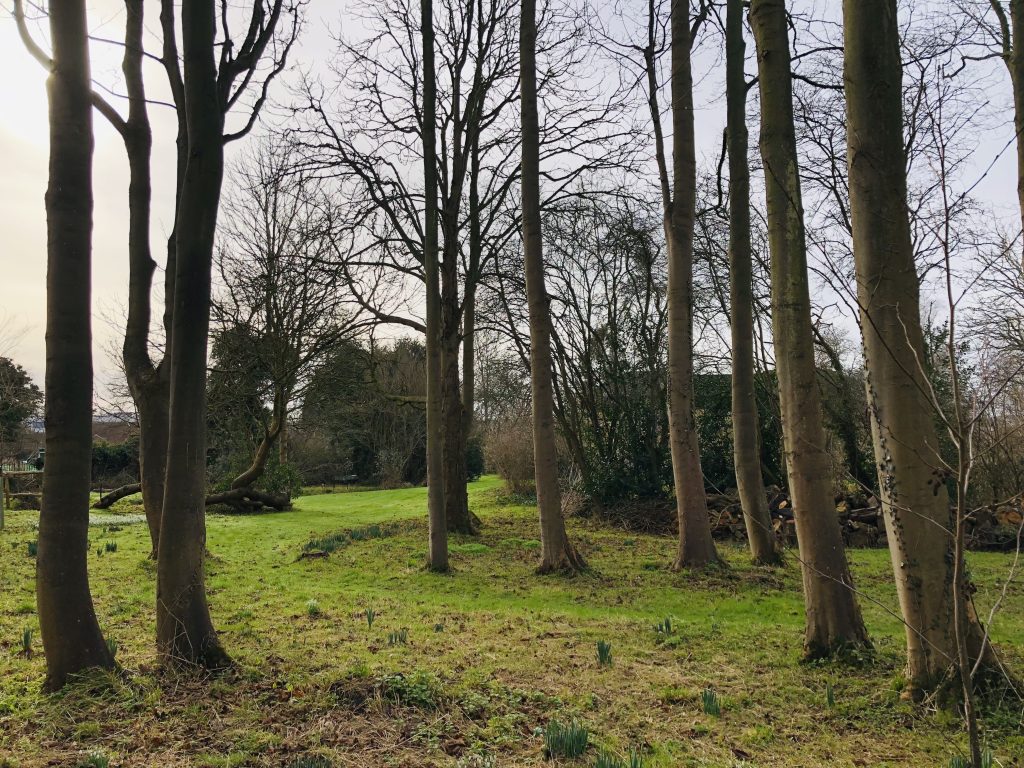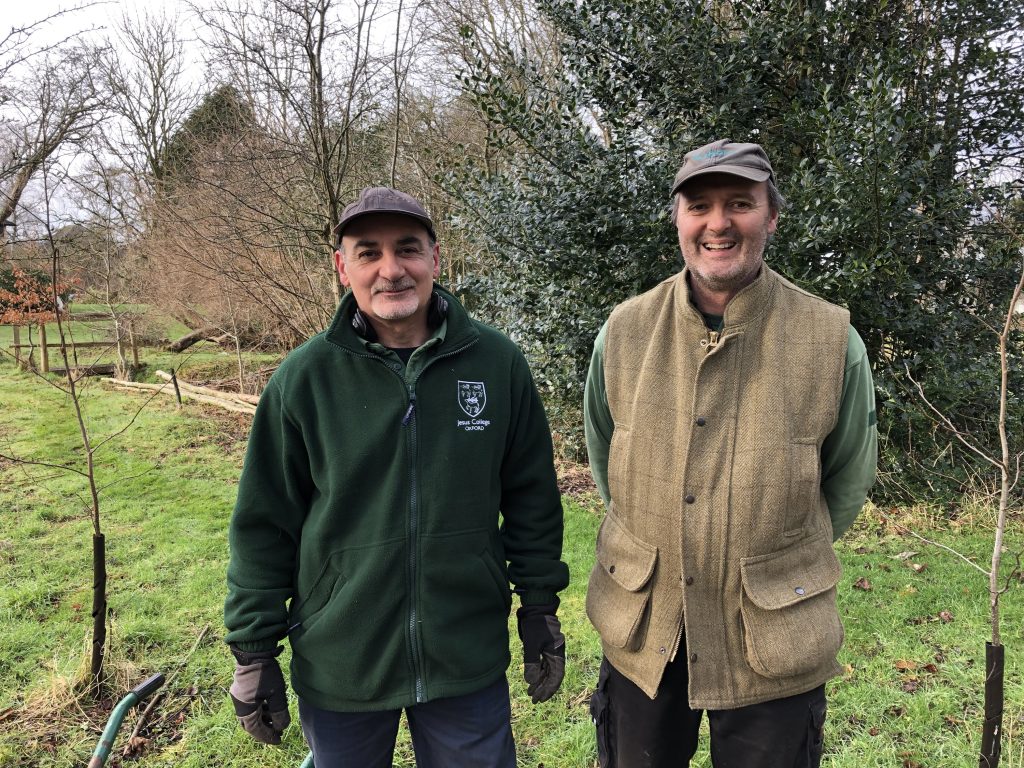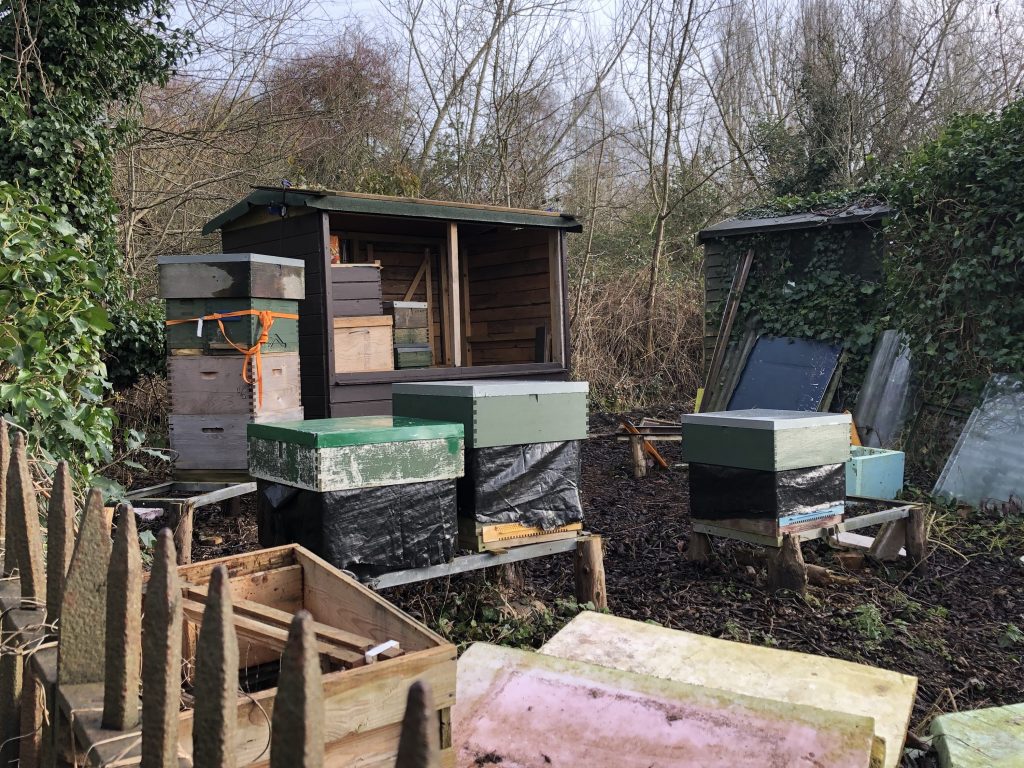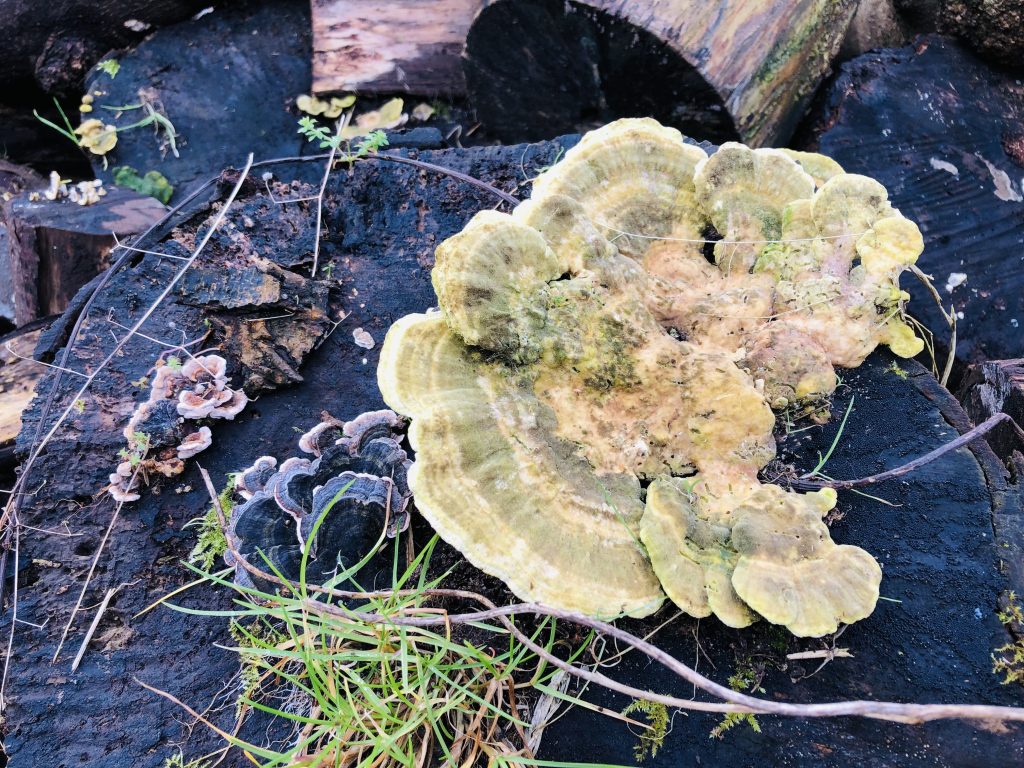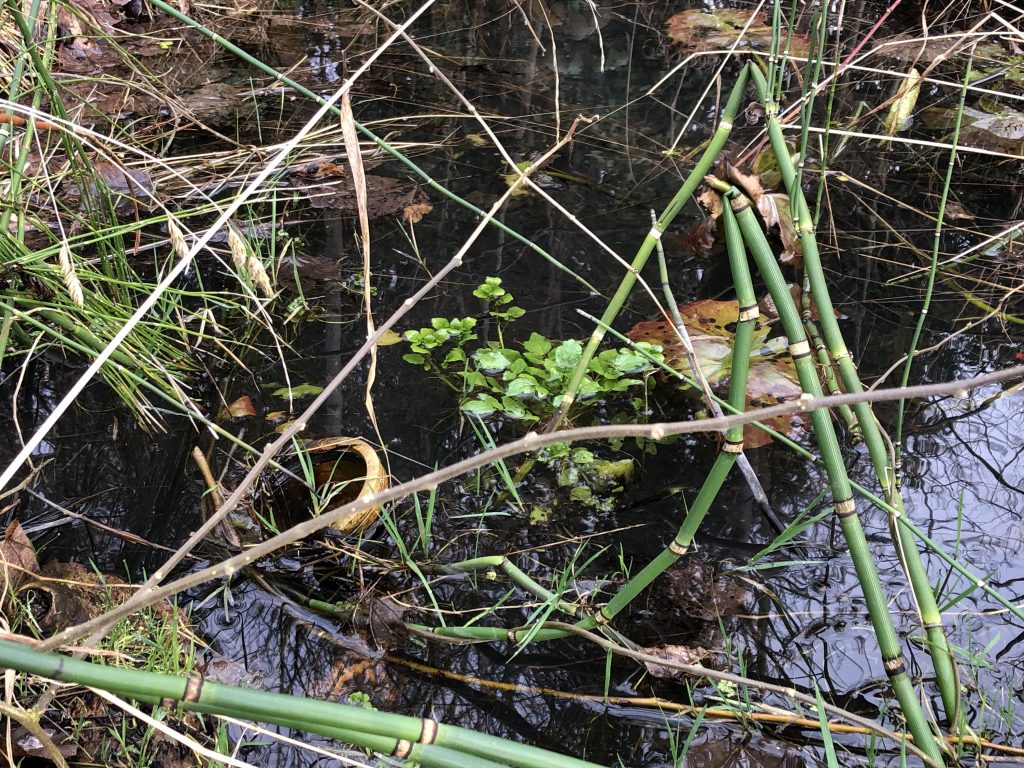There are many beautiful parks and woodlands to enjoy in and around Oxford, but you may be surprised to learn that Jesus College has its own city oasis – one that is harnessing eco-friendly and environmentally sustainable practises to create a landscape that is enjoyed by our students and the local wildlife alike.
Herbert Close, just off the Cowley Road, is home to several of our student halls of residence, including Leoline Jenkins House and Hazel Court, and the College’s sportsgrounds. With rugby, football and cricket pitches co-located with student flats and a laundry (as well as Lincoln College’s sportsground), it’s not an obvious place for a wildlife haven. But, under the careful watch of Groundsman David Mead and his team, Herbert Close has become a wonderful example of environmental sustainability and conservation in an urban setting.
David has been our Groundsman for the past 22 years and lives onsite. Out in nearly all weathers, he’s responsible for maintaining the ten-acre grounds. His varied role takes in everything from looking after the sports pitches and pruning hedges, to planting and managing the abundance of flowering plants and shrubs, many of which have been here since the College first obtained the land. He has also introduced a number of initiatives that have transformed the grounds into something really special.
Herbert Close is bordered by a large golf course, a council allotment, and the sprawling grounds of the Oxford Spires Academy. This juxtaposition of green spaces has created a wildlife corridor across a large swathe of East Oxford, making it the perfect habitat for a wide range of flora and fauna. “We often see Muntjac and Roe deer, badgers and foxes here’ David says. “The badgers use grass cuttings from the mown sports pitches, which we leave to rot down, as bedding for their sets. We can follow the trail of grass right up through the woods!” Along with a variety of familiar garden birds, green and lesser-spotted woodpeckers are also regular visitors, as well as “a pair of kites who have a nest nearby so we see them flying over quite regularly.”
In the heart of the grounds is the Brunet Garden. Peter Brunet (1921–91) was a Senior Research Fellow in Zoology at Jesus from 1965 until his retirement in 1988. He was also our Garden Master and retained the post until his death. It was under his guidance that the garden was first created, as mentioned in his obituary in the 1992 Jesus Record: “Not long before he died he began to lay out the garden and grove at Herbert Close. When it reaches maturity it will be an enduring monument to him.”
Enduring it certainly is – and also beautiful. Even on the cold morning in early February when David and I meet, birdsong echoes through the sycamore trees in the woodland area of Brunet’s garden. Snowdrops and crocuses blanket the ground, and daffodils are just starting to emerge from their winter hibernation. Carefully positioned high-up on tree trunks are bird boxes gifted by former Principal Lord (john) Krebs. Ten-year old oak trees, planted by a former College gardener, are just coming in to bud.
David introduces me to Assistant Groundsman Franco De Mattio, who is wrapped up warmly in his College fleece and pushing a wheelbarrow. “Today we’re splitting and digging up some of our perennial sunflowers” Franco says “and moving them to new beds around the garden.” David adds “Perennial sunflowers have smaller heads than the sunflowers we all know, but produce large amounts of bright yellow blooms, which look beautiful. When you dig them up, they have the tiniest little roots and it’s hard to imagine that they’ll survive in a new spot, but they do. They really flourish here.”
An ample of supply of flowering plants and shrubs is also good for David’s bees. He has six hives on the neighbouring allotment and produces his own honey. He explains that the bees are a vital element to the garden’s success. “I kept bees when I was a young boy growing up in the countryside and am now a member of the Wantage Beekeepers Club. At this time of year they don’t come out of the hive for very long as it’s too cold, but when they do, they’ll have a drink and feed on the nectar from the snowdrops. Of course bees are fantastic pollinators, which is why we have so many snowdrops and other wild flowers across the grounds!”
This symbiosis and his desire to maintain a perfect balance in the ecosystem applies to every aspect of David’s work. For example, when trees have to be cut down, the wood is not burnt; large logs are added the woodpile to slowly rot away, branches are shredded for wood chips, leaves go in the compost bin, and smaller branches are used for ‘dead hedges’ that provide instant wildlife cover for birds, insects and beetles as well as a rich feeding ground for small mammals. “Nothing ever leaves the site” he says. “Everything we cut, prune or weed is put back in to the ecosystem in some way.”
The wild grasses in the woodland are cut back only once a year and reach above knee-height by the summer, perfect for some covert badger manoeuvres and for grass snakes to hide. The steep banks of grass around the sports pitches are also left to grow tall, allowing plants such as common vetch, primroses, oxeye daisy and yellow rattle to thrive. The banks are also popular with voles and foxes. David says, “On very cold or snowy days, we’ve seen foxes curled-up at the top of the banks to make the most of the heat from the winter sunshine.”
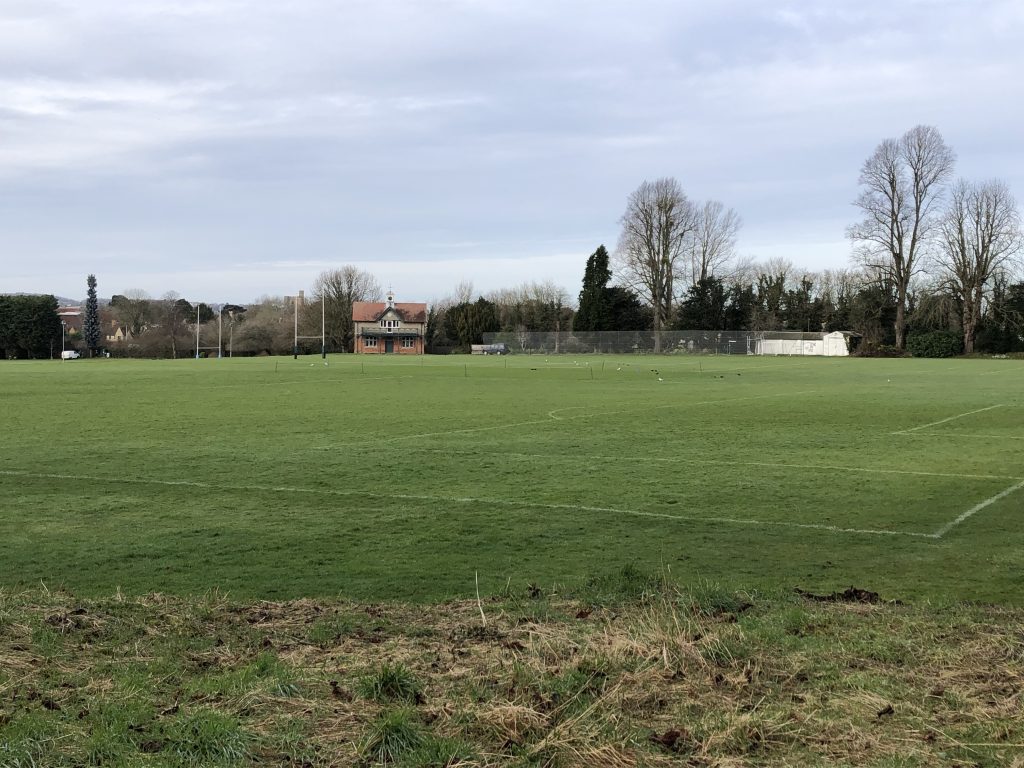
The Jesus College sports pitches are surrounded by high banks of grass, the perfect habitat for a range of flora and fauna
He has also created several small ponds, fed by rainwater, to provide local wildlife with a fresh water supply. The ponds are the perfect location for frogs to spawn (they’ll arrive in a couple of months-time) and insect larvae to mature before they emerge on to the tall reeds he’s planted, to dry and fly for the first time. In one of the ponds he’s experimenting with growing watercress.
It might be supposition to say that Brunet would be delighted if he could see how his namesake garden and the grounds have developed over the past thirty years, but I think he’d enjoy hugely a tour and a chat with David. But what of the other residents of Herbert Close – our students? Do they also enjoy this little urban oasis?
“Yes” he says, “In the warmer months, students will use the garden for reading or revision, or to simply enjoy the sunshine. If I’m doing something noisy, like mowing, nearby, and I see them, I’ll go and find something else to do to give them a bit of peace. Sometimes they put hammocks up in the trees, which is great”. David’s work has also inspired some of them to grow their own plants, and a few students have requested their own plot of land to cultivate in the coming years.
At the end of our walk, David hands me a jar of his much-coveted Oxford City Honey. It’s a sweet end to a wonderful morning taking a walk around this hidden Jesus eco-treasure.
Blog by Jude Eades, Jesus College Communications Manager.
With thanks to David and Franco for their time (and the honey!)

